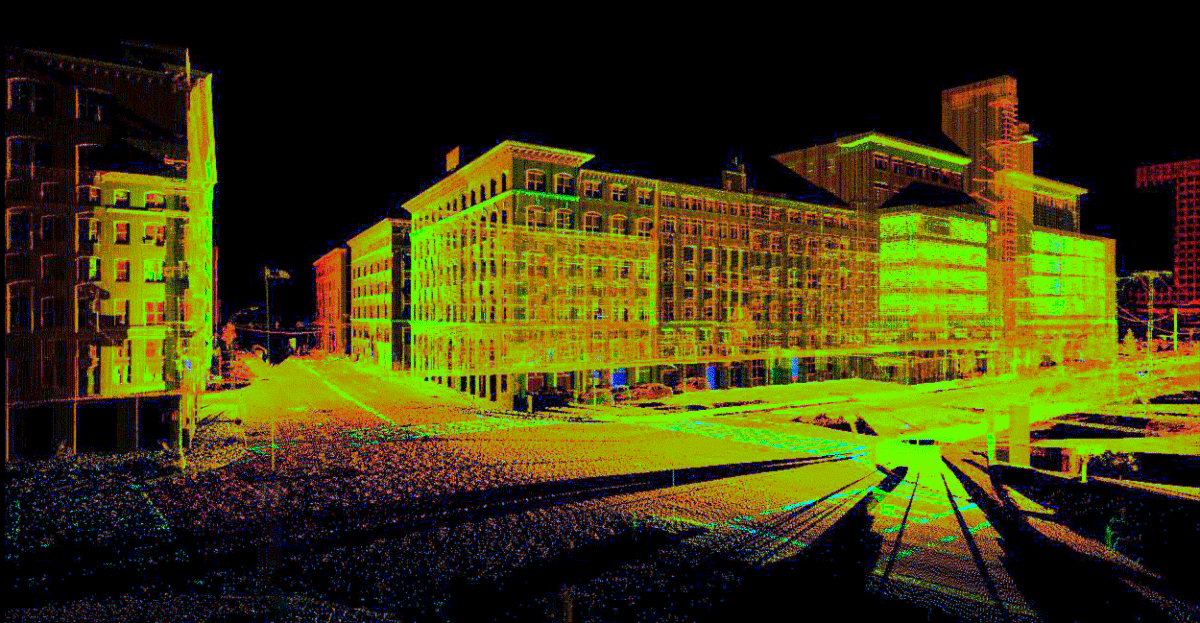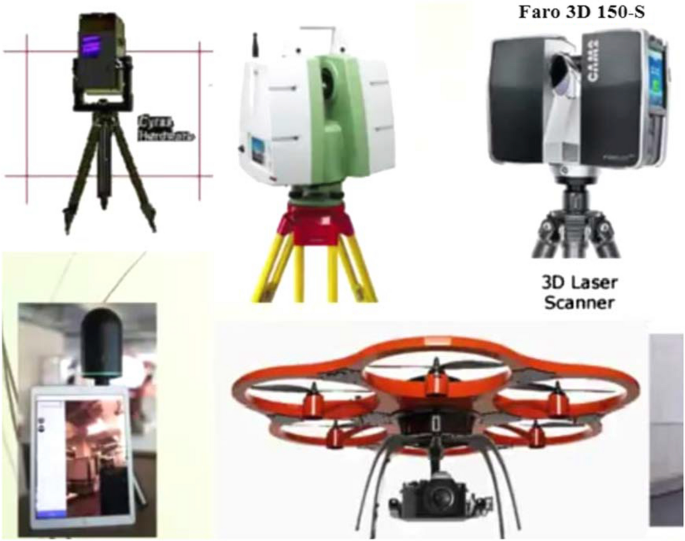Discovering the Applications of 3D Laser Scanning in Archaeology and Cultural Heritage Conservation
The assimilation of 3D laser scanning technology in archaeology and cultural heritage preservation notes a considerable advancement in just how archaeological sites and artifacts are documented and evaluated. This non-invasive approach gives exact spatial data, disclosing detailed information that were previously challenging to record. As the applications of this technology continue to evolve, numerous implications for paperwork, preservation, and education and learning arise, inviting further expedition into its transformative influence on the area.
Comprehending 3D Laser Scanning Modern Technology
3D laser scanning modern technology has actually reinvented the field of archaeology by supplying comprehensive and accurate spatial data. This sophisticated innovation employs laser beams to capture numerous data points from an item or website, developing an extremely precise three-dimensional depiction (3D Scanning). The resulting factor clouds can expose detailed information of archaeological sites, structures, and artefacts that could be unseen to the naked eye
Utilizing this modern technology, excavators can document the exact dimensions, shapes, and positions of things with unmatched precision. This technique minimizes the danger of human mistake and gets rid of the requirement for comprehensive manual measurements. The information accumulated can be examined and shared easily, assisting in partnership among scientists. By incorporating 3D laser scanning with GIS and other electronic devices, excavators enhance their capability to imagine and translate historical contexts, resulting in deeper understandings right into ancient societies and environments.
Enhancing Historical Documents
3D laser scanning considerably boosts archaeological documentation with its capacity to create exact website maps. This technology facilitates detailed artifact evaluation, supplying understandings that standard methods might neglect. Furthermore, it guarantees the preservation of contextual data, which is important for recognizing the connections within archaeological websites.
Precise Site Mapping
While typical mapping methods frequently have problem with capturing the detailed information of archaeological sites, advanced laser scanning technology uses an advanced technique to exact site mapping. This method allows archaeologists to produce very described and exact three-dimensional representations of sites, showcasing topographical variations and structural attributes with remarkable integrity. The capability to catch millions of information points in a matter of minutes permits detailed documents, which can be easily updated and shared among researchers. Furthermore, laser scanning facilitates the measurement of complicated geometries that would certainly be hard to assess making use of conventional devices. Consequently, this modern technology improves the accuracy of website maps, contributing considerably to the preservation and understanding of social heritage sources.
Comprehensive Artifact Evaluation
Laser scanning innovation substantially enhances the analysis of historical artefacts, offering researchers with extraordinary information and accuracy. This method captures detailed surface area textures, measurements, and features that standard paperwork techniques might overlook. By producing high-resolution 3D models, scholars can very closely take a look at artifacts without the threat of damage fundamental in physical handling. This precision enables for much better relative researches, enabling professionals to determine production strategies, stylistic variations, and potential social significance. The ability to control and imagine information in 3 measurements assists in a deeper understanding of artifact functionality and use. Overall, laser scanning fosters a more extensive approach to archaeological documents, guaranteeing that necessary details regarding artifacts is protected for future study and education and learning.
Preservation of Contextual Data
Protecting contextual information is necessary for enhancing archaeological documentation, as it ensures that findings are understood within their original ecological and social structures. 3D laser scanning modern technology greatly adds to this conservation initiative by catching in-depth spatial connections amongst artefacts, frameworks, and their atmospheres. By producing accurate 3D models, archaeologists can record the specific areas and positionings of items sitting, assisting in a thorough understanding of their context. This modern technology makes it possible for scientists to review and evaluate sites long after excavation, keeping the stability of contextual info. Furthermore, electronic documents produced via scanning can be shared internationally, fostering collective research and public involvement. Inevitably, protecting contextual data via 3D laser scanning enhances archaeological stories and promotes an extra extensive gratitude of social heritage.
Conservation of Cultural Heritage Sites
As developments in technology remain to progress, the preservation of social heritage websites has come to be progressively dependent on cutting-edge methods such as 3D laser scanning. This modern technology enables the comprehensive documentation of artefacts, structures, and landscapes, recording their precise measurements and spatial connections in a non-invasive fashion. By producing high-resolution 3D models, scientists can analyze and keep an eye on wear and tear patterns, making it possible for positive preservation techniques.
In addition, 3D laser scanning helps with the sharing of thorough site data with the international community, promoting cooperation among conservationists, excavators, and historians. These designs function as indispensable resources for education and public interaction, increasing recognition of social heritage problems. Furthermore, the electronic documents produced can guard versus loss as a result of environmental factors, vandalism, or disregard. Overall, 3D laser scanning represents a transformative strategy to the preservation of social heritage, making sure that these read this post here sites can be studied and valued by future generations.

Remediation and Reconstruction Initiatives
The detailed documents achieved via 3D laser scanning plays a considerable duty in remediation and restoration efforts within archaeology. This innovation gives accurate dimensions and high-resolution imagery, permitting exact electronic models of structures and artifacts. These versions act as vital referrals during repair procedures, enabling archaeologists to make and imagine the initial layout educated decisions regarding strategies and materials needed for repair service.
Moreover, 3D laser scanning helps with the restoration of harmed or shed components by creating comprehensive reproductions. This procedure aids in ensuring that restorations maintain historical stability while also permitting innovative approaches to recover sites. The capacity to analyze wear patterns and structural weaknesses through scanned data boosts understanding of a website's historic context and its use gradually. Subsequently, 3D laser scanning not just protects the physical elements of cultural heritage however likewise enhances the story of background, directing future remediation ventures.
Educational and Research Study Opportunities
The combination of 3D laser scanning in archaeology opens up substantial instructional and study opportunities. Academic partnerships can improve the understanding of old websites, while specialized training workshops outfit specialists with crucial abilities for utilizing this technology. With each other, these campaigns promote a richer engagement with historical practices and methodologies.
Academic Collaborations in Archaeology
Joint efforts in archaeology have actually ended up being increasingly essential for progressing both educational and study chances. By cultivating partnerships amongst universities, research organizations, and cultural heritage companies, these collaborations assist in the exchange of knowledge and sources, enhancing the high quality of historical research studies. Joint tasks typically leverage diverse knowledge, allowing for ingenious methodologies and complete analyses, particularly in the application of innovations like 3D laser scanning. Such cooperations also advertise interdisciplinary strategies, engaging areas such as history, location, and conservation science. In enhancement, academic partnerships often result in the growth of brand-new curricula and training programs, preparing the future generation of excavators to properly utilize innovative technologies in their work. Eventually, these partnerships contribute to the preservation and understanding of cultural heritage.
Educating Workshops for Professionals
Educating workshops for specialists in archaeology are increasingly vital for boosting skills in the application of sophisticated technologies such as 3D laser scanning. These workshops offer participants with hands-on experience in making use of advanced equipment and software program, cultivating a deeper understanding of data capture and evaluation procedures. Experts can learn to create exact digital models Website of historical websites, which substantially help in documentation and conservation initiatives. Additionally, these training sessions often consist of conversations on finest practices and study, advertising expertise exchange amongst participants. By purchasing continual education and learning, professionals can remain upgraded on developing modern technologies, eventually enhancing the performance of their research study and cultural heritage conservation initiatives. This commitment to ability enhancement is crucial for progressing the field of archaeology.
Future Trends in 3D Laser Scanning for Archaeology
As innovations in innovation remain to improve different fields, the future of 3D laser scanning in archaeology assures to improve both the precision and efficiency of website documents and evaluation. Emerging fads indicate an expanding assimilation of man-made intelligence and artificial intelligence, promoting automated data processing and interpretation. This development will enable archaeologists to evaluate complex datasets faster, resulting in faster insights into historic contexts.
The assimilation of drone technology with 3D laser scanning is most likely to increase, allowing complete aerial surveys of historical sites that are challenging to gain access to. The increasing cost of scanning tools will certainly democratize access, equipping smaller sized establishments and independent scientists to make use of these tools properly. Furthermore, innovations in virtual reality and enhanced fact will certainly make it possible for immersive experiences for public interaction and education, making archaeological findings much more easily accessible and interactive. These trends collectively signify a transformative future for archaeology, boosting conservation initiatives and broadening the self-control's outreach.
Frequently Asked Inquiries
Just How Much Does 3D Laser Scanning Devices Expense?

What Are the Limitations of 3D Laser Scanning?
The restrictions of 3D laser scanning include high costs, possible data processing difficulties, level of sensitivity to environmental problems, and trouble capturing complex information in intricate surfaces, which can affect the precision and efficiency of checked representations. (3D Scanning)

Can 3D Laser Scanning Be Used Undersea?
Yes, 3D laser scanning can be made use of undersea, however it requires customized tools and methods to conquer challenges such as water distortion and minimal exposure. Successful applications have actually been shown in marine archaeology and undersea surveys.
How much time Does a Scanning Task Normally Take?
A scanning job visit this site generally takes anywhere from a few days to several weeks, relying on the complexity and size of the location being scanned, in addition to the preparation and post-processing requirements entailed in the job.
Exist Certain Software Application Requirements for Handling 3D Scans?
Yes, certain software application requirements for refining 3D scans include programs efficient in managing large factor clouds, such as Autodesk ReCap, Cyclone, or MeshLab. These devices assist in analysis, visualization, and assimilation into numerous applications successfully.
The combination of 3D laser scanning modern technology in archaeology and cultural heritage conservation marks a substantial development in just how historical websites and artifacts are recorded and evaluated. 3D laser scanning modern technology has changed the field of archaeology by giving in-depth and precise spatial information. As advancements in innovation continue to progress, the conservation of cultural heritage websites has actually come to be increasingly reliant on ingenious approaches such as 3D laser scanning. As advancements in innovation continue to improve numerous areas, the future of 3D laser scanning in archaeology promises to enhance both the precision and effectiveness of website documents and evaluation. The assimilation of drone technology with 3D laser scanning is likely to broaden, allowing complete airborne studies of historical websites that are difficult to access.